I've been in Norway for the past three weeks running two consecutive tours. While I've been here, I've had a few discussions with participants regarding the validity of using spirit-levels when composing.
In this post, I'd like to put forward a counter-argument for using spirit-levels when doing landscape photography. I'm sure some people will disagree with me or feel that spirit-levels have helped them a lot, but this is really just my point of view, so bear with me on this one.
Many of us use a spirit-level of some kind to help us get our horizons level. There are a couple of issues with this as I see it:
1) The first is that we are only levelling our camera with gravity. We are not balancing the objects within the frame when we use a spirit level, and this is where we get it wrong.
Many horizons are what I call 'false-horizons'. A false-horizon is one where the contours of the land are not in sympathy with gravity. In the image example below, the edge of the lake appears to be higher at the right-hand side of the image and lower at the left-hand side. The camera had been levelled with a spirit level, yet the false horizon is not level with the frame of the image.
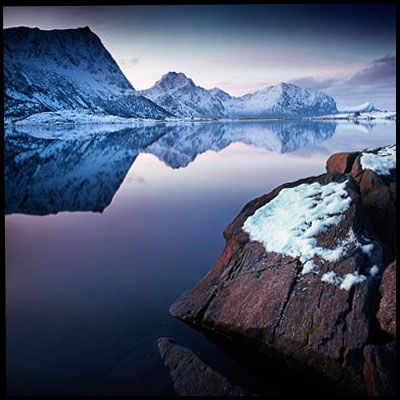
What is happening here is that the contour of the lake rises as we move further towards infinity in the frame. Leveling with gravity makes no sense because the horizon is actually rising. If we are to level our horizon, there is only one thing we must level it with - and that is the edge of the frame. Here is an adjusted image to illustrate how the image was recomposed to ensure the false-horizon is in balance with the frame of the picture:
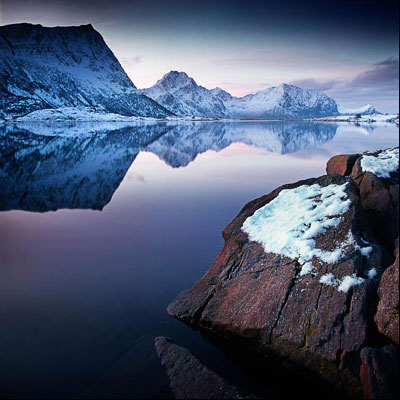
I now no longer use a spirit-level for a few reasons:
a) I need to level objects within the frame - with the actual frame, and not with gravity.
b) balancing objects without the aid of a tool such as a spirit-level means I am more in control of the overall composition. I have to think more about where all the objects are and how they balance with each other. I believe using a spirit-level takes this level of awareness away from me, and thus the compositions I would come up with are less focussed as a result.
2) The second issue I have with using a spirit level is that they allow us to compose images while we are not able to interpret the composition correctly. The reason why many horizons can be so far off the mark for many photographers is to do with how we physically stand behind our camera. Many of us often cock our heads sideways to view either through the eye-piece, or at the live-view screen. Most of us are not aware we're doing it, but what we're attempting to do is balance a composition while our head is not level with the viewfinder. This may not seem like a problem, but it really is. It is extremely difficult to balance a composition when viewing sideways because we simply can't interpret the scenery so clearly when we do. Take this image for instance:
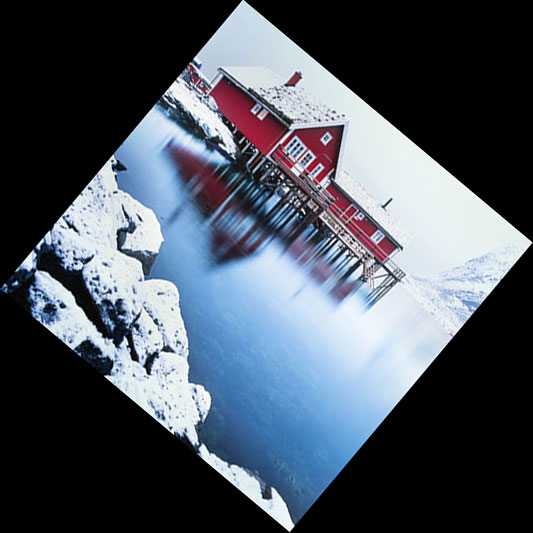
I've rotated this image by 40 degrees to simulate how you would see this composition if you were viewing it through an eye-piece or on a live-view screen with your head cocked to 40 degrees. In the process of doing so, we find the image a little harder to interpret and understand compositionally. But here is the point: it's not easy to tell if the horizon is level in relation to the picture's frame. It looks level within the context of the frame its in, but is it really?
In the image below, I've rotated the entire frame to 0 degrees, to simulate how you would see the above composition if you were viewing it through an eye-piece or live-view with your head level to the camera:
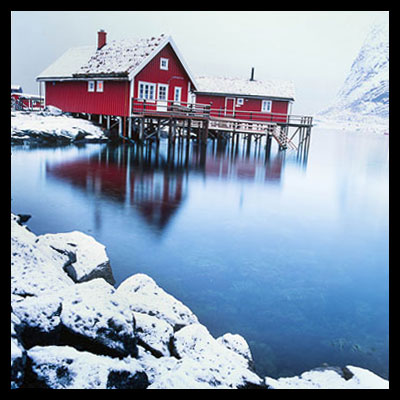
Looking straight on to the picture, we can now see that the horizon is actually off. That's because we're able to interpret things more easily when we are head-on with the camera. Not when we've got our head cocked sideways.
But let me ask you this... what exactly is the horizon in this image? We actually build up an 'imaginary horizon' based on the contents of the frame. In the instance of this image, it's a strange combination of vertical lines in the red house, and also the struts of the pier. But there's a degree of 'keystone' effect to this image because I actually had the camera pointed down toward the ground. If I show you the levelled image, you can still see distortion in the house:
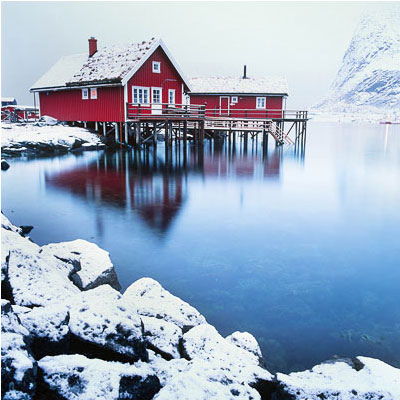
You could argue that the image is still not straight. I think the real answer is that the image is as straight as it can be, taking into consideration all the keystone distortions that are apparent in the composition. We've somehow balanced the left-had side of the house with the right-hand side, and decided there is some level of balance in there. We levelled the contents of the picture within the context of the frame. Not with gravity.
Ok, I know it's not easy sometimes to get your head level with the eye-piece of your camera, but I always make a concious effort to try to get my head as level as I can. If it means I need to lie down on the ground to keep my head level with the camera, then I do it. If it means I need to bend my legs to keep my head level, then I will do it. Because when I am level, I'm not only able to notice if my false-horizons are level, but also if all the objects within the frame balance with each other. In other words, having my head level with the camera enables me to improve my compositions.
A spirit-level only levels our camera with gravity, but it does nothing to help us understand and fine-tune our compositions, and it does nothing to help us balance false-horizons. We must learn to level our images based on what is within the frame, and the only way to achieve this, is to keep our eye level with our camera.
Let your eye, rather than a spirit-level decide what is good. It's really up to your own internal sense of balance and composition to get it right.
